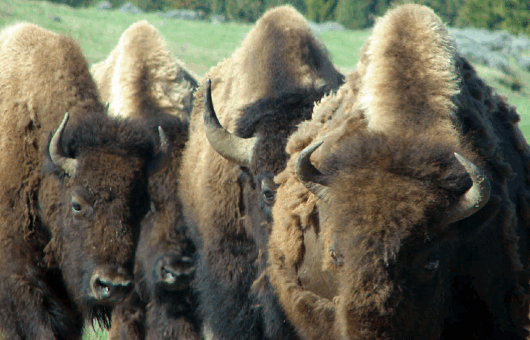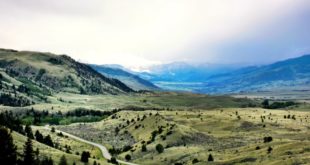The bison were among 88 captured in the facility northwest of Gardiner, Montana in early January. Most had been captured in order to select an experimental group of 25 seronegative bison released at the north end of the Gardiner Basin on January 19. During the selection process, care was taken to ensure young bison calves were not separated from their mothers.
According to National Park Service officials, 40 of the bison released back into the park Thursday had been tested for exposure to brucellosis. Of that group of 40, 19 tested positive and 21 tested negative for exposure to brucellosis. Twenty-two bison that had been held at Stephens Creek were not tested for exposure to brucellosis.
One bison cow held in Stephens Creek and found injured was euthanized on January 12.
With Thursday’s release, the Stephens Creek facility is free of bison.
Snowpack levels along Yellowstone’s northern range are about 30 percent above average for this time of year. Like elk and other ungulates, bison migrate during the winter to lower elevations looking for areas with less snow, where it may be easier to find food.
Park managers believe that if snow continues to accumulate at the current rate, some or all of the bison released Thursday, as well as additional groups of bison that migrate into the Gardiner Basin, could move across the northern boundary of Yellowstone onto public and private land in Montana.
Under the Interagency Bison Management Plan (IBMP), the National Park Service is responsible for keeping bison from leaving the park boundary at Reese Creek until the State of Montana decides whether the Zone 2 experiment is deemed successful enough to allow for increased tolerance of bison north of the park and west of the Yellowstone River in the Gardiner Basin. There are no restrictions or limits on the number of bison that migrate to the Eagle Creek area north of Gardiner, Montana.
Under the IBMP, when hazing bison back into the park becomes unsafe or ineffective, bison can be captured at the Stephens Creek capture facility. Bison that are not being held for spring release back into the park could be shipped to slaughter. If that occurs, the meat from the slaughtered bison is distributed to regional food banks and tribal groups. No bison have been shipped to slaughter during the winter of 2010-2011.
RELATED STORIES: Yellowstone Bison Killed After Wandering Off State Forest Land; Some Quarantined Yellowstone Bison to be Released to Montana Today; Shift in Yellowstone Bison Management in Place for 2011
We’ve also set up a free Twitter account so you can receive updates on the device of your choice.
 Yellowstone Insider Your Complete Guide to America's First National Park
Yellowstone Insider Your Complete Guide to America's First National Park





